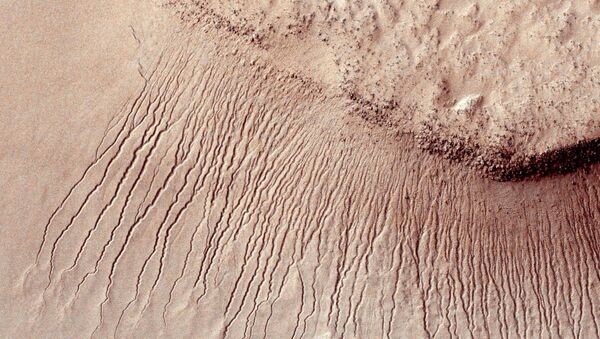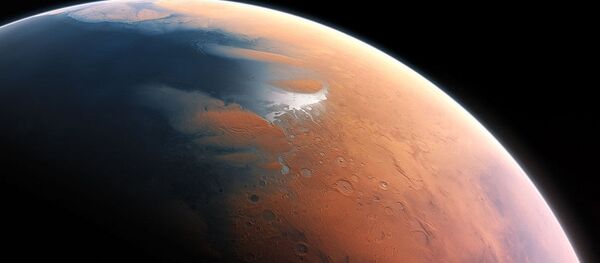The study is the first such survey to explain how exactly liquid water creates the streaks that appear and disappear seasonally on the Red Planet.
Touting the survey as a "great laboratory study, like a science fair project" was David Stillman, a senior research scientist at Southwest Research Institute's department of space studies, who did not take part in the study.
"It's really neat how they were able to go into the lab, into these chambers, and simulate what would happen on Mars, because no one had ever predicted anything like this happening before," he was quoted by the website Verge as saying.
During the study, scientists conducted an array of lab experiments to see how water and sediments interact on Mars. Recreating the Red Planet's thin atmosphere, they installed a 7.5-ounce block of ice at the top of a slope covered with a thin layer of sand.
"Then, they watched the melting ice boil and evaporate, ejecting the sand grains into the air and building small piles of sand. As more grains piled up, the piles collapsed, forming similar streaks to the ones observed on Mars' surface," according to the Verge.
On the other hand, the study unfortunately stopped short of addressing "the million-dollar question" of whether the water forming these streaks contained any form of life, the Verge concluded.





